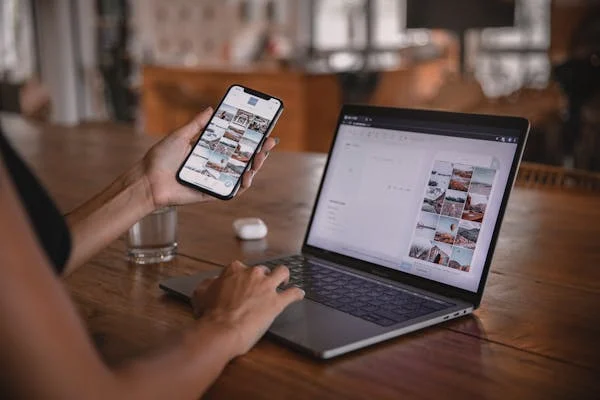In today’s competitive market, standing out is more challenging than ever. One powerful way to promote your brand is through merchandise. Branded merchandise can create lasting impressions, increase brand visibility, and build customer loyalty. Let’s explore the best strategies to use merchandise effectively to promote your brand.
Understanding Your Audience
Before diving into merchandise creation, it’s crucial to understand your audience. Knowing who they are, what they like, and how they engage with your brand can help you choose the right merchandise. Conduct surveys, analyze social media interactions, and study your customer demographics. This research will guide your decisions and ensure your merchandise resonates with your target audience.
Creating Unique and Useful Merchandise
The key to successful branded merchandise is offering items that are both unique and useful. Think beyond traditional items like pens and mugs. Consider what your audience would appreciate and use regularly.
For example, if your audience is tech-savvy, consider offering branded tech gadgets like phone stands or USB drives. If they are environmentally conscious, eco-friendly products like reusable bags or bamboo utensils can be a hit.
Your merchandise should not only be useful but also reflect your brand’s personality. This creates a stronger connection between your brand and your audience. For instance, if your brand is known for its fun and quirky nature, your merchandise should mirror this vibe.
Quality Over Quantity

The Strategic Importance of Quality
For startup founders, focusing on quality over quantity is not just a matter of preference but a strategic necessity. High-quality merchandise can set your brand apart in a crowded market. It communicates your commitment to excellence and can significantly enhance your brand’s reputation. When customers receive high-quality merchandise, they associate that quality with your brand, fostering trust and loyalty.
Investing in Premium Materials
Investing in premium materials for your merchandise can have a long-term positive impact on your brand. Premium materials not only look and feel better but also last longer, ensuring that your brand remains visible for an extended period. For instance, using high-quality fabric for apparel or durable materials for accessories can make a substantial difference.
As a startup, budget constraints are a reality. However, consider this investment as a strategic move. High-quality merchandise may have a higher upfront cost, but the return on investment can be significant. Customers who receive and appreciate premium items are more likely to become repeat buyers and brand advocates.
Partnering with Trusted Suppliers
Building relationships with trusted suppliers is crucial in ensuring the quality of your merchandise. Research and partner with suppliers known for their reliability and quality standards. Establishing a good relationship with your suppliers can also lead to better pricing and exclusive deals, which can be beneficial for your startup.
Conduct due diligence by requesting samples and checking reviews or testimonials from other businesses. Ensure that your suppliers understand your quality expectations and brand values. This partnership is foundational to maintaining the high standards you set for your merchandise.
Quality Control Processes
Implementing rigorous quality control processes is essential to maintain the standard of your merchandise. Regularly inspect the merchandise for any defects or inconsistencies. This can be done through random sampling or a more systematic approach depending on your production scale.
For startups, this might mean personally checking the first few batches or hiring a third-party service to conduct these inspections. Ensuring that every item meets your quality standards before it reaches the customer can prevent negative experiences and reinforce your brand’s reputation for excellence.
Personalizing High-Quality Merchandise
Adding a personal touch to high-quality merchandise can enhance its perceived value. Personalized items show that you’ve put thought and effort into creating something special for your customers. This could be as simple as including a handwritten thank you note or customizing items with the customer’s name.
For example, if you’re producing high-quality notebooks, consider offering options to personalize the cover with the recipient’s initials. This small touch can make a significant difference in how the merchandise is perceived and cherished.
Marketing the Quality of Your Merchandise
Effectively communicating the quality of your merchandise is crucial. Highlight the premium materials and meticulous craftsmanship involved in creating your products. Use your marketing channels to tell the story behind your merchandise – how it’s made, the care taken in its production, and why it stands out.
Visual content can be particularly powerful in this regard. High-resolution images and videos showcasing the details of your merchandise can help convey its quality to your audience. Use testimonials from satisfied customers to reinforce your message.
Pricing Your Merchandise Appropriately
Pricing high-quality merchandise appropriately is essential. While customers are often willing to pay a premium for quality, the price should still reflect the value they receive. Conduct market research to understand what similar products are priced at and find a balance that covers your costs while offering good value to your customers.
Be transparent about why your merchandise costs what it does. Educate your customers on the benefits of investing in quality items and how they provide better value in the long run compared to cheaper alternatives.
Building a Brand Around Quality
As a startup, building a brand around quality can differentiate you from competitors and create a strong market position. Consistently delivering high-quality merchandise helps in establishing a reputation for reliability and excellence. This can attract discerning customers who value quality and are willing to support a brand that shares their standards.
Branding Consistency
Consistency is crucial in all aspects of branding, including merchandise. Your merchandise should align with your brand’s visual identity and message. This includes using your brand’s colors, logo, and typography consistently across all items. Consistent branding helps in creating a cohesive brand experience and strengthens brand recognition.
Ensuring Quality and Consistency
Quality is a significant aspect of branding consistency. High-quality merchandise not only looks better but also lasts longer, which keeps your brand in front of your customers for a more extended period. It’s essential to source your merchandise from reliable suppliers who can deliver consistent quality.
Conduct regular quality checks to ensure that every batch of merchandise meets your standards. For instance, if you are producing branded T-shirts, ensure that the fabric, print quality, and fit are consistent across all items. This attention to detail reflects your commitment to quality and enhances your brand’s reputation.
Aligning Visual Elements
For startups, maintaining visual consistency across all merchandise is crucial. This means using the same colors, fonts, and logo placement on every item. Consistent visual branding helps customers instantly recognize your brand, which is essential for building a strong brand identity.
Start by creating a brand style guide that outlines the specific colors, fonts, and logo usage guidelines. Ensure that anyone involved in creating or producing your merchandise has access to and understands this guide.
For example, if your brand colors are blue and white, ensure these colors are prominently featured in all your merchandise. Consistency in visual elements reinforces brand recognition and trust.
Consistent Messaging
Your brand’s message should be clear and consistent across all merchandise. This includes taglines, slogans, and any text or imagery used. Consistent messaging helps in communicating your brand’s values and mission effectively.
Develop a set of key messages that reflect your brand’s core values and mission. These messages should be used consistently in all your marketing materials, including merchandise. For example, if your brand promotes sustainability, ensure that this message is evident in your merchandise through eco-friendly products and related taglines.
Integrating Brand Values into Merchandise
Your merchandise should not only reflect your brand visually but also embody your brand values. If your brand values include innovation, community, or sustainability, these should be evident in your merchandise choices.
For example, if sustainability is a core value, choose eco-friendly materials and highlight this choice in your marketing. If innovation is a key value, consider creating high-tech or unique merchandise that stands out. This alignment between your merchandise and brand values reinforces your brand identity and makes a stronger impression on your customers.
When customers see your branded merchandise, they should instantly associate it with your brand. This instant recognition can only be achieved through consistent and thoughtful branding.
Strategic Placement and Presentation
How you present and distribute your merchandise is also part of maintaining branding consistency. Use packaging that aligns with your brand’s visual and messaging guidelines. For example, if your brand is minimalist, your packaging should reflect that simplicity and elegance.
Ensure that your merchandise is displayed consistently across different platforms, whether online or in physical locations. The unboxing experience should also reflect your brand’s identity. Thoughtful presentation enhances the overall customer experience and reinforces your brand’s image.
For startup founders, ensuring branding consistency across merchandise is a strategic move that builds trust, enhances brand recognition, and creates a cohesive brand experience.
By aligning visual elements, messaging, quality, and values, and by staying open to feedback and adaptation, startups can effectively use merchandise to promote their brand and foster customer loyalty.
Strategic Distribution

Leveraging Local Events and Pop-Up Shops
For startup founders, local events and pop-up shops offer unique opportunities to distribute your branded merchandise effectively. These settings allow you to engage directly with your target audience and create memorable brand experiences. Participating in local fairs, festivals, or community events can help you reach a broader audience and generate buzz around your brand.
Pop-up shops provide a temporary retail space where you can showcase and sell your merchandise. These shops can be set up in high-traffic areas or in collaboration with other local businesses. The temporary nature of pop-up shops creates a sense of urgency and exclusivity, encouraging people to visit and make purchases. Use this opportunity to interact with customers, gather feedback, and create a buzz on social media.
Partnering with Complementary Businesses
Strategic partnerships with complementary businesses can significantly extend the reach of your merchandise. Identify businesses that share a similar target audience but are not direct competitors. Collaborate on co-branded merchandise or bundle products together. This not only provides added value to customers but also introduces your brand to a new audience.
For instance, if you run a fitness brand, partnering with a local gym to offer co-branded water bottles or workout gear can be mutually beneficial. Both businesses can promote the merchandise, leveraging each other’s customer base for broader exposure.
Utilizing Corporate Gifting
Corporate gifting is another strategic distribution channel that can enhance your brand’s visibility. Offer your merchandise as gifts to clients, partners, and employees. This not only strengthens business relationships but also turns recipients into brand ambassadors. High-quality, thoughtfully chosen merchandise can leave a lasting impression and keep your brand top-of-mind.
Consider gifting during holidays, company anniversaries, or as part of a client onboarding process. Tailor the gifts to reflect the recipient’s preferences and your brand’s values. Personalized items can create a more meaningful connection and demonstrate your attention to detail and appreciation.
Online Marketplaces and E-commerce Platforms
Distributing your merchandise through online marketplaces and e-commerce platforms can dramatically increase your reach. Platforms like Amazon, Etsy, and eBay provide access to a global audience. Setting up an online store on these platforms can drive sales and enhance brand visibility.
Ensure your online store is well-branded and provides a seamless shopping experience. Use high-quality images and detailed descriptions to showcase your merchandise. Leverage the platform’s marketing tools, such as sponsored ads and email marketing, to promote your products and drive traffic to your store.
Incorporating Merchandise in Subscription Boxes
Subscription boxes have gained popularity for their convenience and surprise element. Partner with subscription box services to include your merchandise in their monthly deliveries. This introduces your brand to a curated audience that is already interested in discovering new products.
Ensure that your merchandise aligns with the theme and quality of the subscription box. For example, if you are partnering with a beauty subscription box, include high-quality, branded beauty tools or accessories. This strategy not only promotes your brand but also provides valuable feedback from a targeted group of consumers.
Direct Mail Campaigns
In the digital age, direct mail might seem old-fashioned, but it can be incredibly effective for merchandise distribution. Sending branded merchandise directly to potential customers’ homes can create a personal connection. Consider including a handwritten note or personalized message to enhance the experience.
Direct mail campaigns can be particularly effective for high-value prospects or loyal customers. For example, sending a branded journal or planner at the beginning of the year can be a thoughtful gesture that keeps your brand in front of the recipient throughout the year. Measure the success of these campaigns by tracking engagement and feedback from recipients.
Integrating Merchandise with Marketing Campaigns

Creating Limited Edition Items
Limited edition merchandise can create excitement and urgency among your audience. When people know that an item is only available for a short period, they are more likely to act quickly. Use limited edition items for special events, anniversaries, or collaborations with other brands. This strategy not only boosts sales but also enhances the perceived value of your merchandise.
Promote these limited edition items through your marketing channels, ensuring your audience is aware of their exclusivity. This can drive traffic to your online store or physical locations and create a buzz around your brand.
Incorporating Merchandise in Social Media Campaigns
Social media is a powerful platform for promoting branded merchandise. Create engaging content that features your merchandise, such as photos, videos, or unboxing experiences. Encourage your audience to share their experiences with your merchandise by using specific hashtags. This user-generated content can serve as authentic testimonials and further promote your brand.
Run contests and giveaways on social media, offering your merchandise as prizes. This not only increases engagement but also spreads the word about your brand to a broader audience. Make sure to follow up and showcase the winners, which adds to the excitement and credibility of your campaigns.
Aligning Merchandise with Your Brand Story
Your merchandise should tell a story that aligns with your brand’s mission and values. For instance, if your brand advocates for sustainability, use eco-friendly materials for your merchandise. If your brand is centered around fitness and health, consider items like water bottles, gym bags, or yoga mats.
Storytelling through merchandise creates a deeper connection with your audience. It turns ordinary items into meaningful products that represent your brand’s values. This emotional connection can significantly enhance brand loyalty and customer retention.
Partnering with Influencers
Influencers can amplify your merchandise strategy by reaching audiences that you might not be able to reach on your own. Partner with influencers who align with your brand values and have a strong following among your target audience. Provide them with your branded merchandise and encourage them to share their experiences with their followers.
Influencers can create authentic and engaging content featuring your merchandise, which can drive more interest and sales. Their endorsement adds credibility and trust to your brand, making your merchandise more appealing to their followers.
Using Merchandise as Part of Customer Loyalty Programs
Incorporating merchandise into your customer loyalty programs can be highly effective. Offer exclusive branded items as rewards for loyal customers. This not only incentivizes repeat purchases but also strengthens the emotional bond between your brand and your customers.
For example, create a tiered loyalty program where customers can earn points for every purchase and redeem them for exclusive merchandise. Make sure these items are desirable and reflect your brand’s quality. This strategy not only promotes your merchandise but also encourages customer retention and loyalty.
Measuring the Impact of Your Merchandise Strategy
Tracking Metrics and KPIs
To understand the effectiveness of your merchandise strategy, it’s crucial to track relevant metrics and Key Performance Indicators (KPIs). Some important metrics include sales figures, social media engagement, website traffic, and customer feedback. Analyze these metrics regularly to identify what’s working and what needs improvement.
For example, track how many people participated in your social media contests and how much traffic those contests drove to your website. Measure the increase in brand awareness and engagement after distributing your merchandise at an event. This data can provide valuable insights into the success of your strategy and guide future decisions.
Gathering Customer Feedback
Customer feedback is invaluable in refining your merchandise strategy. Conduct surveys or request feedback through your website or social media channels. Ask your customers what they think of your merchandise, what they like, and what they would like to see in the future.
Use this feedback to make informed decisions about your merchandise offerings. If customers express a preference for certain types of items or materials, consider incorporating those preferences into your next batch of merchandise. Listening to your customers and responding to their needs can significantly enhance your merchandise strategy and overall brand loyalty.
Continuous Improvement
Your merchandise strategy should evolve based on the feedback and data you gather. Continuously look for ways to improve and innovate. Stay updated with industry trends and be open to experimenting with new ideas. Regularly assess the quality and effectiveness of your merchandise and make adjustments as needed.
Innovation can set your brand apart from competitors. Whether it’s introducing a new product line, collaborating with other brands, or leveraging new distribution channels, staying dynamic and adaptable can keep your merchandise strategy fresh and effective.
Wrapping it up
Promoting your brand effectively through merchandise requires a combination of creativity, strategic thinking, and a deep understanding of your audience. By focusing on creating unique, high-quality items that resonate with your target market, you can build stronger connections and enhance brand loyalty.
Strategic distribution is key—leveraging local events, pop-up shops, online marketplaces, and partnerships with complementary businesses can significantly extend your reach.
Incorporating merchandise into your broader marketing campaigns, whether through social media, corporate gifting, or direct mail, ensures that your brand remains top-of-mind and engages your audience in meaningful ways.
Tracking the impact of your strategies through metrics and customer feedback allows for continuous improvement and innovation, keeping your approach fresh and effective.
Remember, the goal is to create merchandise that not only promotes your brand but also adds value to your customers’ lives. With the right approach, your branded merchandise can become a powerful tool in your marketing arsenal, helping you achieve long-term success and growth.
READ NEXT:
- Boost Your Business with These Social Media Marketing Ideas
- Festive and Fun Social Media Content Ideas for December
- Gratitude and Growth: Thanksgiving Social Media Post Ideas for Businesses
- Creative Design Ideas to Elevate Your Social Media
- Exploring the Impact of Social Media on Mental Health






















Comments are closed.